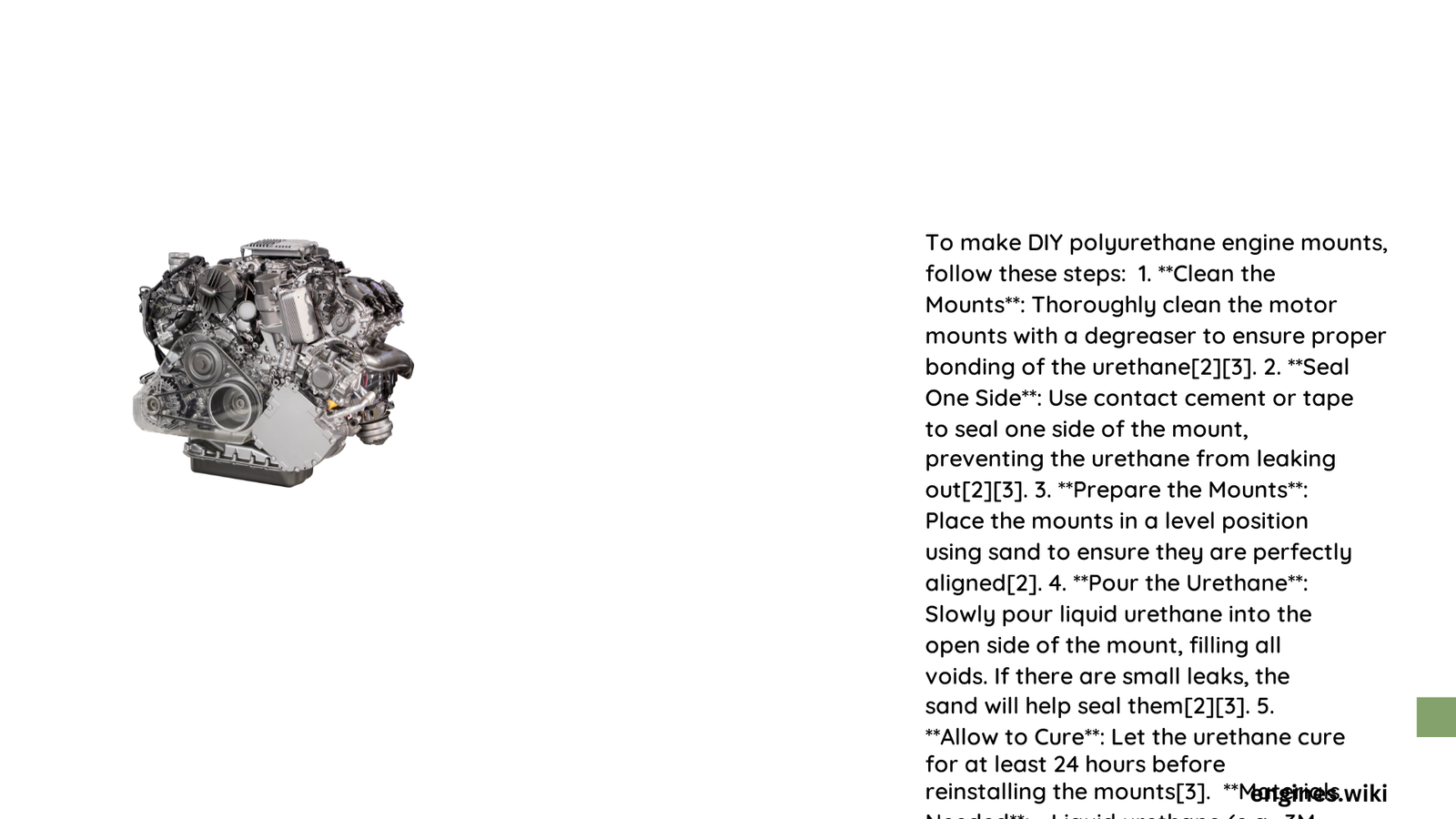Polyurethane engine mounts represent a transformative upgrade for automotive enthusiasts seeking enhanced vehicle performance and reduced engine movement. These specialized mounting solutions replace traditional rubber components, offering superior durability, reduced vibration, and improved power transfer between the engine and chassis. By understanding the precise installation techniques and material characteristics, DIY mechanics can significantly upgrade their vehicle’s mechanical responsiveness and overall driving experience.
What Are Polyurethane Engine Mounts?
Polyurethane engine mounts are specialized mechanical components designed to secure an engine within a vehicle’s frame while minimizing unwanted vibrations and maximizing structural integrity. Unlike standard rubber mounts, these high-performance alternatives provide:
- Enhanced durability
- Reduced engine movement
- Improved power transmission
- Longer operational lifespan
Why Choose Polyurethane Over Traditional Rubber?
| Feature | Rubber Mounts | Polyurethane Mounts |
|---|---|---|
| Durability | 30,000-50,000 miles | 80,000-100,000 miles |
| Vibration Absorption | Moderate | High |
| Performance Impact | Minimal | Significant |
| Cost | Lower | Higher |
What Tools Do You Need for Polyurethane Engine Mounts DIY?

Essential tools for successful polyurethane engine mount installation include:
- Liquid polyurethane (e.g., Reoflex 60)
- Caulking gun
- Degreaser
- Contact cement
- Protective gloves
- Socket set
- Hammer
- Duct tape
How to Prepare for Installation?
Preparation is crucial for successful polyurethane engine mount replacement:
- Clean Thoroughly: Remove all existing grease and debris from mounting surfaces
- Inspect Mounting Points: Check for any structural damage or wear
- Gather Materials: Ensure all required tools and polyurethane are available
- Work in Controlled Environment: Maintain room temperature around 70-80°F
Step-by-Step Polyurethane Engine Mount Installation
Remove Existing Mounts
- Support the engine securely
- Remove mounting brackets
- Extract old rubber components
- Clean mounting surfaces completely
Prepare for Polyurethane Pouring
- Seal one side of mount with contact cement
- Level the mounting surface
- Warm polyurethane to room temperature
- Prepare pouring equipment
Pouring and Curing Process
- Fill mount cavity slowly
- Tap gently to remove air bubbles
- Allow 16-48 hours for complete curing
- Maintain consistent temperature during curing
Performance Considerations
Polyurethane engine mounts offer significant performance advantages:
- Reduced engine movement during acceleration
- Improved throttle response
- Enhanced power transmission
- Minimal wheel hop
- Better overall vehicle stability
Potential Challenges and Solutions
- Compatibility: Verify mount specifications for your vehicle model
- Hardness Selection: Choose appropriate Shore hardness (40A-80A)
- Precise Installation: Follow manufacturer guidelines carefully
Cost and Investment
- DIY Kit Price Range: $25-$200
- Potential Performance Gain: 5-10% improved power transfer
- Longevity: 2-3 times longer than standard rubber mounts
Safety Recommendations
- Use protective equipment
- Work in well-ventilated area
- Follow manufacturer instructions precisely
- Consider professional assistance if uncertain
Final Thoughts
Polyurethane engine mounts represent an advanced automotive modification offering substantial performance improvements. Proper research, preparation, and careful installation can transform your vehicle’s mechanical characteristics.
